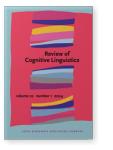Vol. 22:1 (2024) ► pp.36–69
What foreign language learners make of grammatical descriptions depends on description type, proficiency, and context
Most usage-based research emphasizes the importance of implicit, input-driven learning in naturalistic environments, but recent studies have adopted usage-based grammatical descriptions for instructed learning in classrooms. These descriptions are intended to draw learners’ deliberate attention to relevant usage patterns in the input and thereby support intake. Most of these studies compare usage-based descriptions to other types of descriptions for their efficiency, while little attention has been paid to the ways in which learners understand and apply such descriptions. This study examines what foreign language learners understand of usage-based grammatical descriptions of target structures. In an experimental forced choice task, Chinese learners of German received usage-based descriptions of case structures and then classified target instances in variable contexts. A multivariate regression analysis indicated that choices were influenced by interactions of the type of description with participants’ target-language proficiency and the semantic and lexical target contexts. This is discussed in terms of noticing and category formation. This study argues that learners are able to use grammatical descriptions as some kind of auxiliary model for recognizing and categorizing target patterns. The descriptions thus make learners aware of the mechanisms underlying implicit learning and help them exploit these mechanisms for explicit learning.
Article outline
- 1.Introduction
- 2.Instructed and input-driven language learning and their interaction
- 3.The current study
- 3.1Method
- Target structures
- Participants
- Material and procedure
- Predictions
- Statistical analysis
- 3.2Results
- 3.1Method
- 4.Discussion
- 5.Conclusion
- Note
-
References
